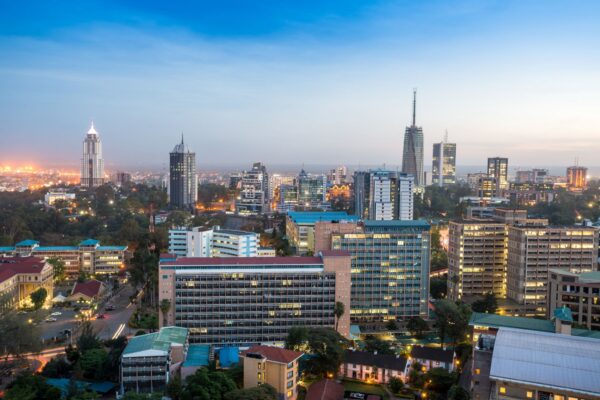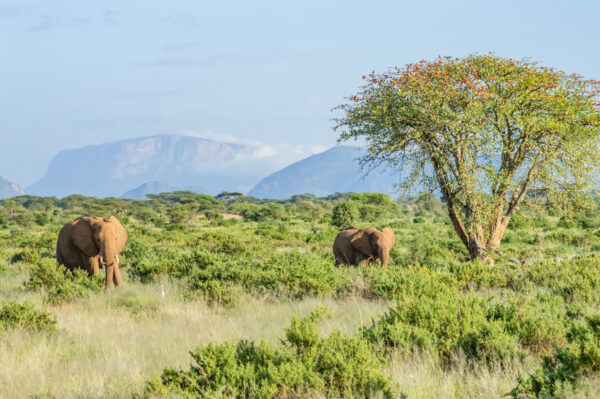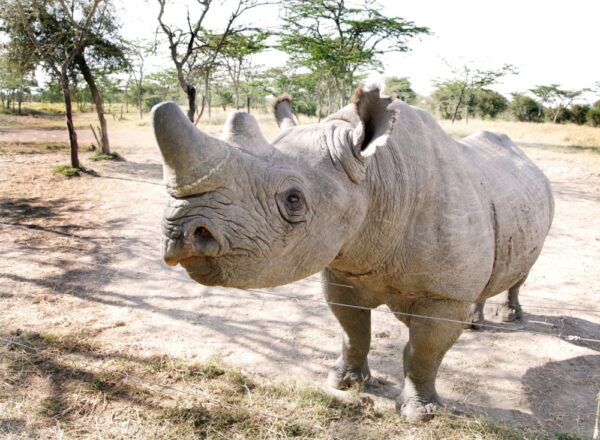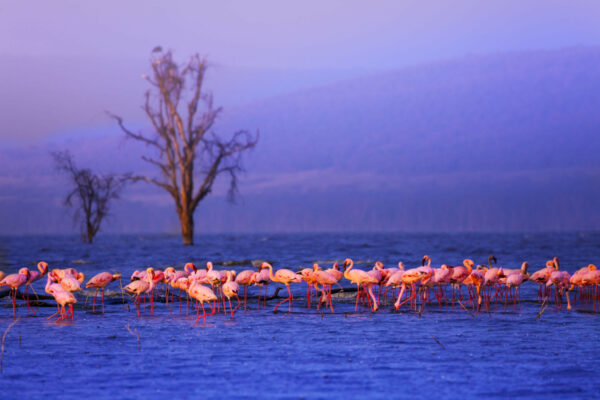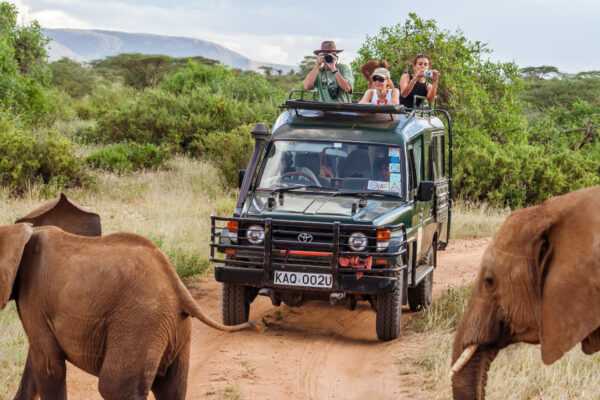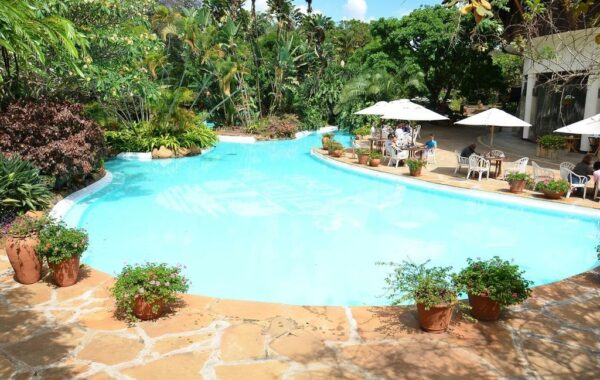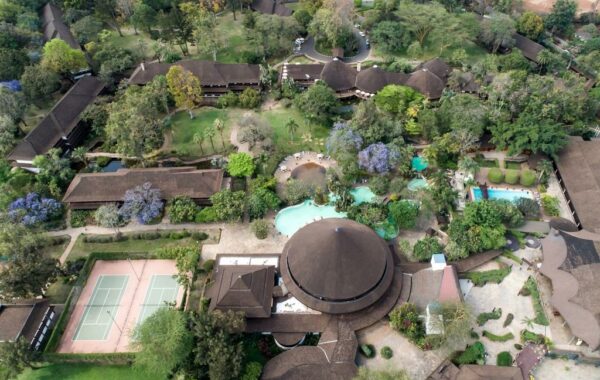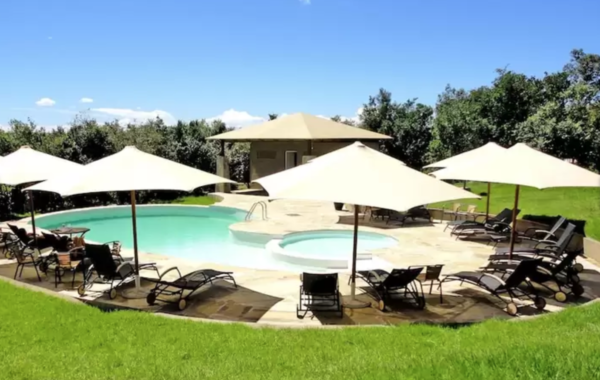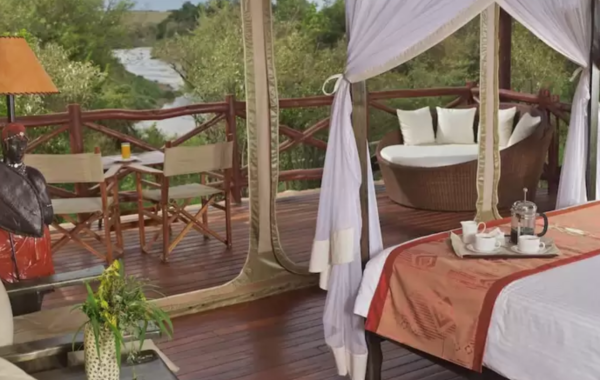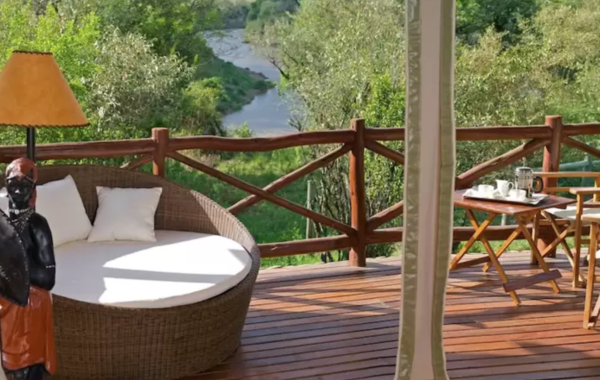Kenya’s wildlife conservancies
Explore the national parks saving Kenya’s wildlife
Start your Kenya trip in capital city Nairobi, where you can explore the city’s markets, museums and nightlife, before heading north to Samburu Game Reserve. Its arid savannahs are home to wildlife such as reticulated giraffes and Grevy’s zebras, as well as elephants, cheetahs and lions. Next, head to Ol Pejeta Conservancy to see what the frontline of wildlife conservation looks like. Explore the Ol Pejeta Rhino Sanctuary to learn more about these critically endangered creatures, or see our chimpanzee cousins at the Jane Goodall Institute. From here, you can travel to the Great Rift Valley and the flamingos of Lake Nakuru, before experiencing world-class wildlife watching in the Masai Mara National Reserve. Home to the Big Five and renowned for the awe-inspiring great wildebeest migration, this is the ultimate place to go on safari. End your trip back in Nairobi.
Key information
| Destinations | Masai Mara National Reserve, Nairobi, The Great Rift Valley, Ol Pejeta Conservancy, Samburu Game Reserve |
|---|---|
| Activity | Safari, Family, Nature & Wildlife |
| Physical Level | Easy |
| January - December |
Suggested itinerary

Visit Nairobi’s vibrant communities
Day 1 in Nairobi
Most visitors to Kenya simply fly in and out of capital Nairobi – which is a huge mistake. Yes, it might be a concrete jungle when compared with the rest of Kenya’s natural landscapes, but vibrant Nairobi is a centre of art, music and cultural heritage. Take some time to explore the city’s music and food scene and you won’t be disappointed.
Don't miss
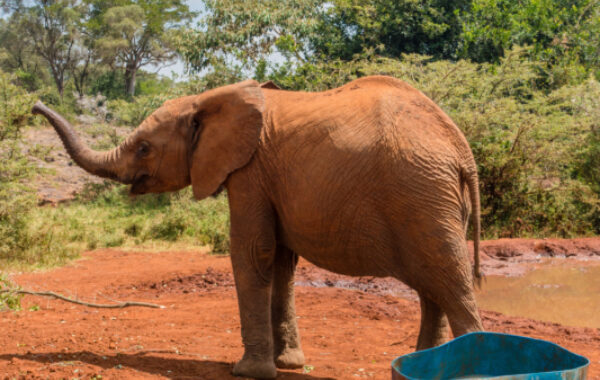
Feed a baby elephant at a Nairobi sanctuary
Many trips to Kenya start and finish in its largest city and capital, Nairobi. For a shot of cuteness, visit one of its wildlife sanctuaries to see baby elephants — many of which are orphaned due to poachers — feeding and playing happily in the mud.

Meet the Samburu community preserving wildlife
Day 2–3 in Samburu Game Reserve
Far removed from mainstream Kenyan safari, the three interconnected reserves of Samburu, Buffalo Springs and Shaba have a wild reputation.
The landscape here is harsh with endless sunburnt plains of acacia thornbush out of which rise the occasional fertile and densely forested mountain peaks, ranges, table lands and volcanic plugs.
The Samburu are a nomadic people who have lived within the Samburu Game Reserve for centuries. Make sure to visit Samburu villages if you come to the Reserve – unlike other parts of Kenya, the interaction is non-commercial and non-invasive.
For safaris in Samburu, elephants, in particular, are the main event. There are large herds who tend to migrate huge distances in search of water.
But there are also a few lion prides, leopards, lots of baboons, superb birding and some unusual desert adapted species such as gerenuk, the beautiful reticulated giraffe, the finely striped Grevy’s zebra and the blue-legged Somali ostrich.
Until they were poached out, Northern Kenya was home to huge numbers of black rhino but the good news is that today even those are back – but only in one highly protected location.

See endangered rhinos in Ol Pejeta Game Reserve
Day 4 in Ol Pejeta Conservancy
If you’ve ever wondered what the hide of a rhino feels like, wanted to experience a safari at night or dreamed of running (or riding) in the wild, open air of a safari reserve, head to Ol Pejeta Conservancy.
The conservancy is in the Laikipia region, at the foothills of Mount Kenya. The sanctuary is the largest in East Africa to host black rhino, as well as the world’s last two remaining white northern rhino. Ol Pejeta is also the only place in Kenya where you can see chimpanzees.
Conservation is at its core, with several experiences available for intrepid safari-goers who want to do more than just watch the animals.

Traverse the Great Rift Valley
Day 5 in The Great Rift Valley
The Great Rift Valley stretches across Africa from Mozambique into Lebanon in the Middle East. Dissecting Kenya in two, it’s a great place to see several lakes supporting more than 500 bird species and crocodiles.
Don't miss
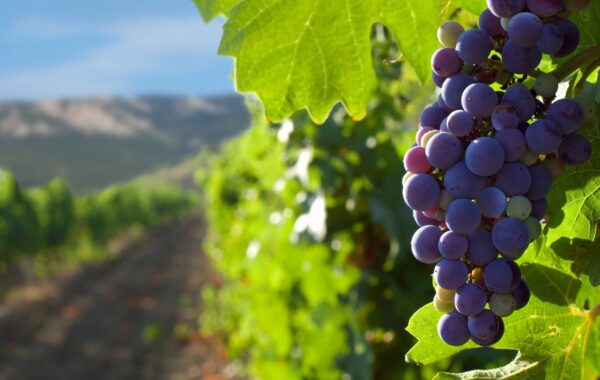
Wine tasting in Naivasha
Sample some of East-Africa’s fastest-growing wines with a tasting tour at the Leleshwa vineyard. The winery, best known for its light, summery sauvignon blanc, is based in Naivasha, 47 miles north of Nairobi in the heart of the Rift Valley.
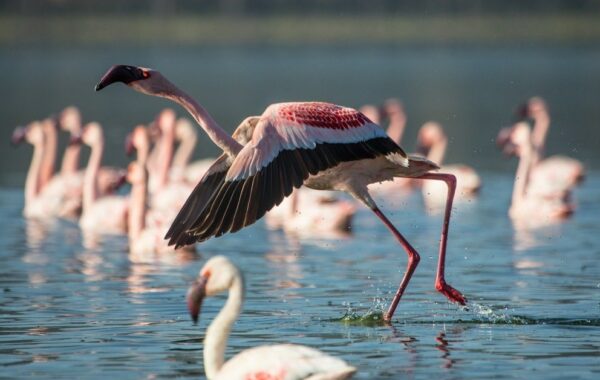
Lake Nakuru safari
Go on a Rift Valley safari at one of Kenya’s smallest but best-kept reserves. The park is home to a diverse range of wildlife including the rare Rothschild giraffe, endangered rhinos and, when conditions are right, the amazing spectacle of hundreds of thousands of pink flamingoes feeding at Lake Nakuru, the park’s focal point.

Big five safaris in the Maasai Mara
Day 6–7 in Masai Mara National Reserve
The king of Kenya safari, the sweeping grass plains of the Mara (as it’s usually referred to) are home to the densest concentration of large mammals on the planet. This is the place to see large prides of black-manned lions, bellowing elephants, grumpy buffalo and a pick ‘n’ mix box of antelope and gazelles. And that’s before we even touch on the smaller creatures and huge array of birds.
But, above and beyond all else, the Mara is renowned for the spectacular wildebeest migration. From about June to early-October each year, around two million wildebeest and other herbivores leave Tanzania’s Serengeti and splash across the crocodile infested waters of the Mara River in search of fresh, rain-fed grass in the Masai Mara. It’s a spectacular phenomenon and a classic safari experience.
In high seasons (July-September and the Christmas period) there can be hundreds of safari vehicles in the park at any one time, and park rules about approaching animals and sticking to the roads are sometimes ignored by less scrupulous guides (this is a particular problem with super-low budget safaris operating out of Nairobi). I once interviewed a biologist who told me she’d seen about 70 vehicles crowding around one cheetah!
But the Mara is a big place. If you stay in the more remote corners and move your focus away from chasing the big cats and elephants, you can still find tranquillity even in high season.
The other way to avoid the crowds is by visiting in mid-season. Personally I love June when everything is fresh and green after the rains, the wildebeest are starting to arrive but not the tourists, and temperatures are cool and pleasant. There can also be some spectacular thunderstorms at this time. And if the focus of your interest is birdwatching, then the rainy seasons of November and April-May are excellent.
My biggest Mara tip: look beyond the reserve itself. Nowadays the Mara is almost completely surrounded by a series of community-run wildlife conservancies. Offering almost complete exclusivity, if you can afford the often high prices then these are by far the best areas to stay. These conservancies have vastly expanded the amount of land under some kind of protection and they’ve brought real benefits to both wildlife and local communities as well as one of the worlds finest safari experiences for visitors. I can highly recommend Mara North, Naboisho, Nashulai Maasai Conservancy and Ol Dereski, though you’ll likely have an amazing time in any of them.
Don't miss
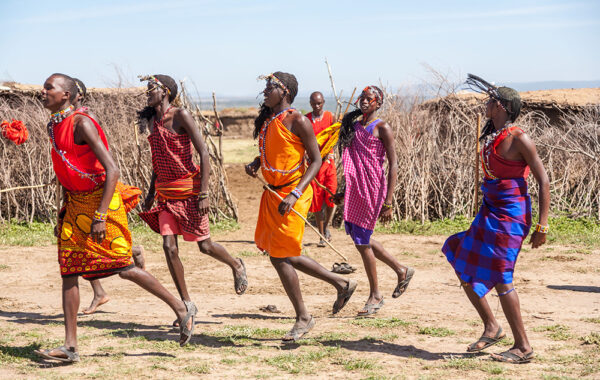
Take a cultural tour with the Masai or Meru peoples
Immerse yourself in local culture with a visit to a traditional village, witnessing daily life and learning more about the lives and history of these semi-nomadic people.
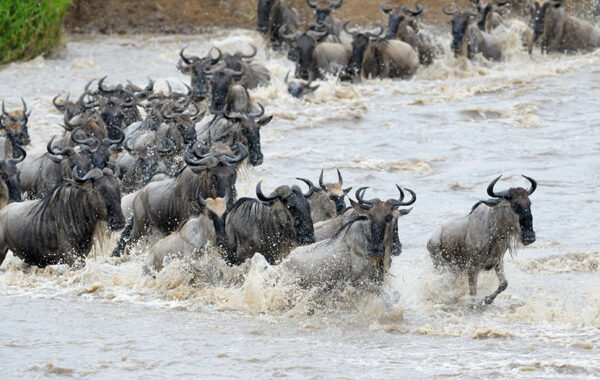
See the famed Mara River crossing
Head to the Kenyan side of the Mara River between July and August to witness the great migration’s premier spectacle – the crossing of the Mara River. All it takes is one wildebeest taking the plunge to spark a frenzy – but beware of the lurking crocodiles.

Return to Nairobi and depart
Day 8 in Nairobi
Enjoy an early breakfast at the camp, checkout and conduct a game drive en-route with an optional opportunity to visit a village of the Maasai people to witness the singing and dancing that is part of their daily lives and sacred rituals.
Transfer to Nairobi in the afternoon, for your onward flight.
Where to stay
Superior
Safari Park Hotel
Safari Park Hotel, Nairobi's famous resort and Africa's largest and most exciting conference destination An oasis of tranquillity in the heard of Nairobi, the Safari Park Hotel blends stylish elegant African architecture with supremely luxurious accommodation; sparkling water gardens with an inland beach and beautifully landscaped gardens, with a wide choice of international restaurants.
Superior
Ashnil Mara Camp
Ashnil Mara Camp comprises 56 luxurious tents set overlooking the picturesque vast of Mara. Ashnil Mara Camp lies inside the renowned Masai Mara Game Reserve, along the confluence of the Mara Olkeju Rivers. It comprises of luxurious tents overlooking the picturesque vasts of Mara plains famous for the wildebeest migration feted as the seventh wonders of the word. Com catch the migration amid a raw blend of luxury and the wild.
Book this itinerary
This route booked with one of our specialist tour operators would cost from $2,499pp. Pricing varies by accommodation class, and can be tailored to suit your budget.
Pricing is typically inclusive of hotels, transfers, meals, and all guided excursions and activities.
Other itineraries you might like
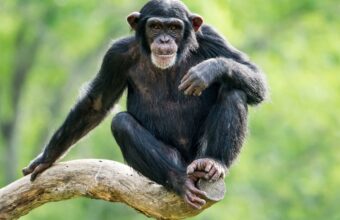
Western Uganda
Mountain gorillas and beyond
Approx. 10 days
Eastern Uganda
Nomads, Nile and natural pools
Approx. 7 days

